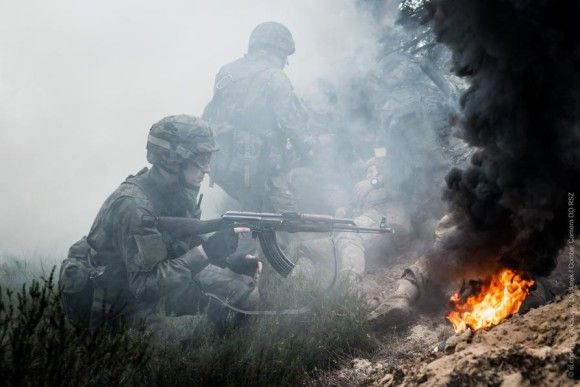W-3 Helicopter Returned to Service in the Polish Navy
0209 helicopter, upgraded to the W-3WA version, has landed at the 43rd Naval Aviation Base in Gdynia Babie Doły, two days ago. The return of the first out of five helicopters which, almost three years ago, have been sent to the PZL Świdnik facility for overhauls, initiates the process of reintroducing the type into service in the Baltic Sea region.
At the beginning of the year 2014, the Armament Inspectorate has signed an agreement with the PZL Świdnik facility, in order to modernize five W-3 helicopters belonging to the Polish Naval Aviation Brigade. According to the contract, two transport choppers and three SAR Anakonda helicopters were to be upgraded to the unified W-3WA/W-3WARM standard. 0209 helicopter is the first out of five airframes that is being returned to service. In case of the remaining examples, it is stated that they still require test flight testing and handing off procedures to be carried out.
The Polish Navy, as the first of the branches of the Polish Armed Forces, has started to operate the helicopters of the W-3 family. 0209 helicopter is one of the two airframes which, beginning from 1989, have been introduced into the inventory of the 18th Naval Support Aviation Squadron (18. Eskadra Lotnictwa Łącznikowego MW), based in Gdynia, Babie Doły. Only after the operational experience had been gathered, a maritime SAR variant was developed, in a form of the W-3RM Anakonda model. The first two examples of that helicopter began their service in 1992. The last example, sent to be modernized three years ago, became a part of the Naval Aviation’s inventory back in 1993.
As we were informed by the Polish Navy, last year, a decision has been made to unify another three Anakonda helicopters, with the said airframes having been delivered for the Polish Navy within the period between 1998 and 2002. Following the aforesaid process, all of the W-3 helicopters of the Naval air arm will have identical equipment fitted onboard, which is going to significantly enhance the operational use. It shall also contribute to improved mission safety. The first helicopter, of the aforesaid group, has been delivered to Świdnik back in December. Further examples are to be received there within the upcoming two months. The modification process concerning the second batch of the maritime W-3 helicopters should take place at the end of 2018.
Anakonda is a SAR helicopter, destined to be operated in maritime and land settings, across a variety of weather conditions, at night and during the day. The said rotary-winged aircraft is capable of carrying up to eight casualties, two in a laying position. It has been fitted with an electric winch, the purpose of which is to hoist people and cargo up or down, with the use of a loop, sling, rescue basket or a stretcher. The helicopter in question, with the exception of the two oldest modified transport variant airframes, also uses six pneumatic buoyancy floaters, arranged around the fuselage. Thanks to these, should an emergency landing on the water take place, the crew, as well as the passengers, would have enough time to leave the cabin and cockpit. The crew consists out of up to five persons: commander, co-pilot, rescuer, technician and a doctor - with the latter one’s presence being optional.
The modernized Anakondas have been fitted with a FADEC (Full Authority Digital Engines Control) system, along with new rescue equipment and new FLIR cameras coupled with spotlights. All of the helicopters will also make use of the system for automatic identification of ships (AIS), which will significantly enhance the rescue operations, should the casualties be picked up directly from the said vessels. For that reason, the aircraft returning from Świdnik need to go through an introductory stage, during which the crews, as well as the personnel, would be trained to utilize and operate the new systems and equipment.
The Polish Naval Aviation Brigade operates 8 W-3 helicopters in total, with six being stationed at the 43rd Naval Aviation Base in Gdynia Babie Doły, and remaining ones assigned to the Darłowo Aviation Group being a part of the 44th Naval Aviation Base.



WIDEO: Defence24 Days 2025: Premier Defence & Security Conference in CEE